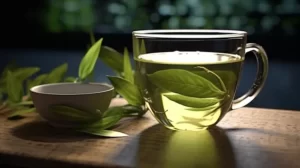It’s astonishing to think about how traditional cultures have long recognized the nutritional and medicinal benefits of plants, long before the need for scientific research demanded by modern medicine. One such plant with the backing of both traditional and modern medicine is the baobab tree, and it may be surprising just how powerful it is.
Known as the “Tree Of Life” in some cultures, baobabs are found predominantly in Africa and Australia and hold deep spiritual significance for many tribes. What most people don’t realize is the potential medicine this tree holds — both in its leaves and its fruit.
The baobab fruit has a dry, powdery, nutrition-packed pulp, and tribes have been consuming the sweet, tangy, pear-like-flavored fruit for thousands of years. They also eat the leaves, which provide a nutritious and edible vegetable that resembles spinach when cooked.
Baobab’s Traditional Uses and Importance
In some tribal communities, consuming baobab leaves in a soup was believed to increase fertility in women, an assertion that doctors have since confirmed to be true. Other uses for the leaves include treating kidney and bladder diseases, relieving asthma, and soothing insect bites.
Traditional applications of the fruit include treating various stomach conditions, fevers, malaria, aches and pains, arthritis, and even hangovers. This extensive list of benefits has led the baobab fruit to be hailed as a modern ‘superfood.’
Nutrition as a Plant Medicine
Baobab comes packed with a “complete” and nutrient-dense profile, that includes:
- Protein (2.6%): The amino acid profile of baobab is comparable to the “ideal” protein, which is rare for plant sources.
-
Fat (0.2%): Baobab contains mostly oleic acid, a monounsaturated fat, which boasts powerful anti-inflammatory benefits. The seeds have even higher quantities of these medicinal fats.
-
Pectin (52%): Being a soluble fiber, pectin can aid constipation as an incredibly effective natural laxative.
-
Fiber (5.7%): The majority of the fiber in baobab is soluble.
Additionally, baobab is rich in Vitamin C (300 mg), Iron (8.6 mg), Calcium (655 mg), and Phosphorus (50.8 mg). Due to the balance of nutrients it provides, the World Health Organization now uses baobab powder to help undernourished children in third world countries rehydrate and receive nourishment.
Integrating Baobab Into Your Diet
To experience the benefits of baobab, you can purchase the powder from health food stores or online retailers like Amazon. Add it to cereals, soups, or stews, or incorporate the baobab superfood powder into smoothie recipes.
The baobab tree is just one example of the power of plant medicine. Traditional cultures have harnessed the benefits of these plants for centuries, applying their knowledge to treat various illnesses and conditions naturally. With modern medicine increasingly studying and confirming what these ancient communities have always known, it’s exciting to think of the doors we’re opening to supporting our health and wellness in new and natural ways.



